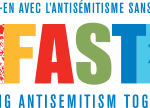
Installment #3 I hope you will explore this active introduction to income inequality. The full lesson is available here. This lesson gets students up and moving and illustrates statistics in a more concrete way. This is adapted form an OSSTF resource that is no longer available. There are issues around boundaries and comfort levels for students as they will be touching and squeezing onto chairs. However, a good introduction and request for willing volunteers should help overcome. Of course, if someone becomes uncomfortable they can swap out with another volunteer.
This is really meant to be an introduction to help students generate questions. We want to take an inquiry approach to learning and this is a good example of how to do that. Inquiry learning is often confused with a “research project” or assignment. But good inquiry learning is a different way of structuring individual lessons that moves away from direct instruction. Direct instruction is still needed in any discipline, but inquiry includes:
- emphasis on the student’s role in the learning process
- student engagement, curiosity, collaboration
- a compelling question that guides the learning
- students thinking critically to construct knowledge as they develop conceptual understanding
- opportunities for students to respectfully challenge, test and redefine ideas
Students will be exploring a variety of issues and solutions over a couple of weeks so there will be opportunities to return to their initial thoughts and challenge/ refine their thinking.
If you have topics, or approaches you would like to see addressed here, let me know! You can comment here.


